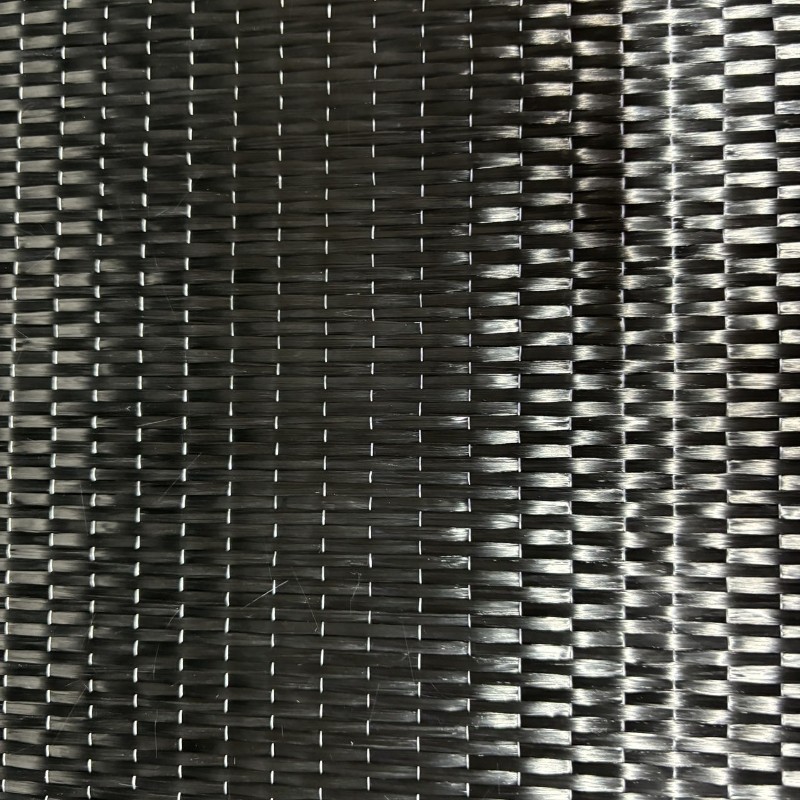News
Unidirectional Carbon Fiber Fabrics
Advantages of Unidirectional Carbon Fiber Fabrics
 Unidirectional carbon fiber fabric is a type of carbon reinforcement that is non-woven and features all fibers running in a single, parallel direction. With this style of fabric, there are no gaps between fibers, and those fibers lay flat. There is no cross-section weave that divides the fiber strength in half with another direction. This allows for the concentrated density of fibers that provide maximum longitudinal tensile potential—greater than any other weave of fabric. For comparison, this is 3 times the longitudinal tensile strength of structural steel at one-fifth of the weight density.
Unidirectional carbon fiber fabric is a type of carbon reinforcement that is non-woven and features all fibers running in a single, parallel direction. With this style of fabric, there are no gaps between fibers, and those fibers lay flat. There is no cross-section weave that divides the fiber strength in half with another direction. This allows for the concentrated density of fibers that provide maximum longitudinal tensile potential—greater than any other weave of fabric. For comparison, this is 3 times the longitudinal tensile strength of structural steel at one-fifth of the weight density.
Likewise, composite parts made of carbon fiber provide their ultimate strength in the direction of the fiber grains. Thus, composites parts that use unidirectional carbon fiber fabric as their exclusive reinforcement provide maximum strength possible in just the two directions (in the direction of the fiber) and are extremely stiff. This directional strength property makes it an isotropic material, similar to wood. During layup of a part, the unidirectional fabrics can be overlapped at varying angle orientations to achieve strength in multiple directions without sacrificing stiffness. Also, during layup, unidirectional fabrics can be layered with other carbon fiber fabric weaves to obtain different directional strength properties or aesthetics.
Unidirectional fabrics are also available in very light weights; even lighter than their woven counterparts. This allows for more controlled constructions of precision parts and precise engineering in layups.
Also, when compared to woven carbon fiber, Unidirectional Carbon Fiber is also more economical. This is due to its lower overall fiber content and less intensive weaving process. This can save on production costs of otherwise perceptively expensive, but high-performance, parts.
Disadvantages of Unidirectional Carbon Fiber Fabrics
The greatest advantage for unidirectional carbon fiber reinforcements is also their greatest disadvantage. They are not appropriate for parts that require a great anisotropic strength property (strength in all directions). Composite parts used in automobiles and other multi-dimensional applications that require strength in all directions should use a different style of weave, such as a plain, twill, or satin weave. You can find these other styles on our website as well.
As another potential disadvantage, composite parts made from unidirectional carbon fiber have a very plain, single-grain finish. If the fabricator wants to have that beautiful, signature carbon fiber finish, they will commonly use a single layer of woven fabric as the outermost layer of their layup. Bike frames, for example, are commonly made with multiple layers of unidirectional fabric laid up at different orientations for maximum strength and stiffness, and then finished with a 3K Twill Weave Carbon Fiber Fabric for that “signature” carbon fiber appearance.
RELATED NEWS
- Development of Enterprises 2023-07-29
CATEGORIES
LATEST NEWS
CONTACT US
Contact: Kai Liu
Phone: +86-15376801419
E-mail: liukai@hxcomposite.com
Whatsapp:+86-153 7680 1419
Add: D-407 Yintaicheng, Zhangdian, Zibo, Shandong 255000
